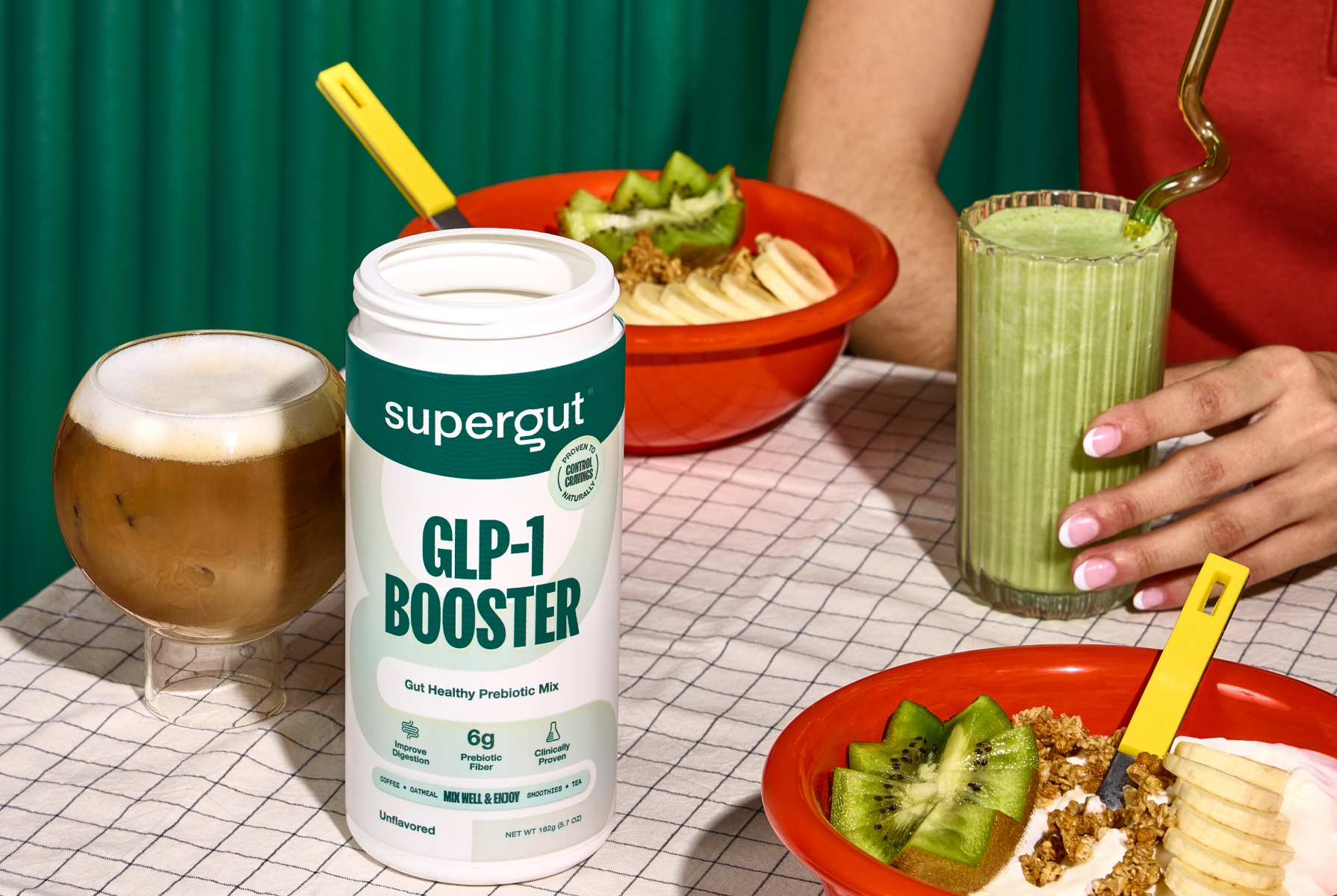Most of us think of fiber as that “keeps you regular” nutrient — important, sure, but hardly exciting. In reality, fiber is one of the most powerful (and most overlooked) tools we have for better health.
The problem? Only 5% of Americans get the recommended 30 grams of fiber per day. That means the other 95% of us are running on a gut microbiome that’s underfed, underperforming, and unable to do its best work for our digestion, metabolism, immunity, and even skin health.
And fiber deficiency doesn’t just announce itself with obvious digestive issues. It can show up in subtle, sneaky ways you might never connect to your gut. Here’s what to watch for.
1. You’re eating… and still hungry.

Meals that lack fiber digest too quickly, leaving your stomach empty and your brain convinced you need more food. Fiber slows this process down and triggers the release of appetite-regulating hormones such as GLP-1, which signals feelings of fullness.
Not to mention, fiber physically adds bulk and holds water in your gut — stretching the stomach walls just enough to reinforce that “I’m satisfied” signal.
The fix: Add more high-fiber foods to your meals — think oats, beans, chia seeds, vegetables, and prebiotic-rich fibers that feed your gut bacteria and keep satiety hormones in check.
2. You get sluggish after meals.
That post-lunch energy crash isn’t just about carbs — it’s about how fast your body breaks them down.
Low-fiber meals are digested quickly, causing a sharp rise in blood sugar followed by an equally sharp drop. That drop can leave you feeling foggy, irritable, or ready to move to a country with a thriving siesta culture.
The fix: Aim to pair carbohydrates with plenty of fiber, plus some protein and healthy fats, to slow the breakdown of food and keep energy steady for hours.
3. You catch every cold going around.

Surprise: your immune system and your gut are deeply connected. In fact, about 70% of your immune cells live in your gut.
Fiber feeds the beneficial bacteria in your microbiome — the very microbes that help train and regulate your immune system. Without enough fiber, these microbes can’t thrive, and your body’s defenses can suffer.
The fix: Focus on a variety of fiber types (soluble, insoluble, and resistant starch) to nourish a diverse microbiome, which is key for a resilient immune system.
4. Your skin keeps breaking out.
The gut-skin axis is real. When your gut microbiome is imbalanced — often thanks to low fiber and excess refined sugar — it can lead to low-grade inflammation throughout the body. That inflammation can show up on your skin in the form of breakouts, dullness, or flare-ups of existing conditions.
The fix: Feed your gut bacteria with prebiotic fiber to help reduce inflammation at the source. Bonus: gut health improvements often lead to visible skin improvements, too.
5. You can’t go regularly.
Yes, we had to say it. If you’re going days without a complete bowel movement, that’s a red flag for fiber deficiency.
Fiber adds bulk to your stool and helps move waste through your digestive tract. Without it, things slow down, waste lingers, and you can end up feeling heavy, bloated, and uncomfortable.
The fix: Increase your fiber gradually (to avoid extra bloating in the short term) and drink plenty of water. This combination helps fiber do its job effectively.
Why Fiber Deserves More Credit

Fiber isn’t just a “nice-to-have” nutrient — it’s essential for nearly every system in your body. The benefits go beyond regularity to include:
- Better appetite control through hormone regulation
- More stable blood sugar and energy
- Stronger immune defenses
- Healthier, clearer skin
- Long-term heart and metabolic health benefits
Yet, despite all of this, most of us still aren’t getting enough. That’s partly because modern diets have shifted toward processed foods that are stripped of fiber, and partly because fiber-rich whole foods require a bit more planning.
Making Fiber a Daily Habit
The good news? It’s one of the easiest nutritional gaps to fix. Here’s how to get started:
-
Start small. If you’re only getting 10–15 grams per day, don’t jump to 30 overnight. Increase gradually to give your gut time to adjust.
-
Mix your sources. Include fruits, vegetables, legumes, nuts, seeds, and whole grains to get a variety of fiber types.
-
Prioritize prebiotics. Prebiotic fibers specifically feed beneficial gut bacteria, helping them produce compounds that support digestion, immunity, and overall health.
-
Make it convenient. Keep quick, high-fiber options on hand — overnight oats, hummus with veggies, or fiber-rich snack bars.
Final Word
Bottom line: If you’re always hungry, constantly tired after meals, getting sick often, battling skin issues, or feeling backed up — your gut may be asking for more fiber.
Getting enough every day isn’t just about avoiding discomfort. It’s about fueling your microbiome, supporting your immune system, and giving your body the foundation it needs to thrive.





